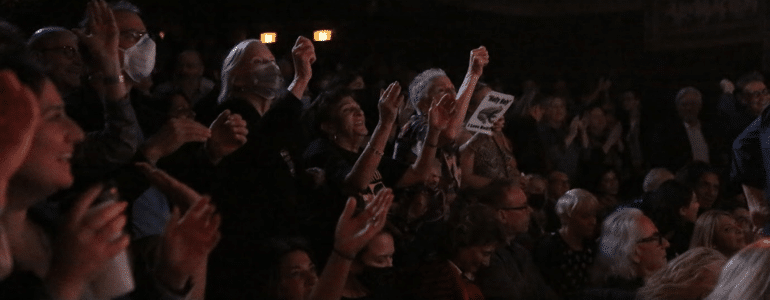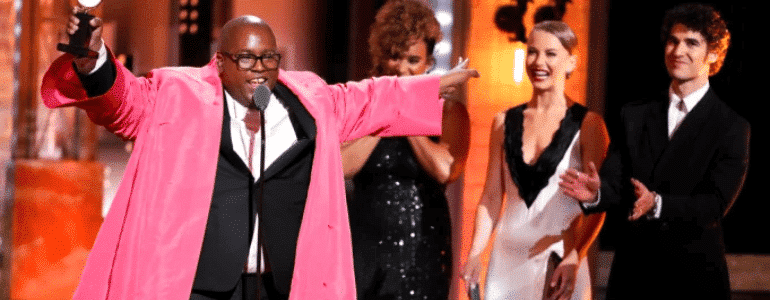What happens when advertisers fish in the same pond.
I was flipping between Fallon and a Law and Order SVU marathon one night a few weeks ago, and I channel-surfed right smack into a commercial for a Broadway show.
Since I hadn’t seen this spot before, and being a student of all things Broadway, I watched.
It ended, and I must have gotten distracted by an incoming email on my laptop (oh yeah, I’m a multi-screen consumer) because I didn’t change the channel and let the commercials continue to run.
A couple o’ minutes later I heard a tune that I recognized . . . sure enough, it was from another Broadway show . . . and I looked up and saw another commercial running shortly after the previous one . . . on the same channel.
Huh, I thought.
When it finished, once again, I heard the 21st-century version of “You’ve Got Mail,” and buried my face into my phone (that’s three screens if you’re keeping track).
Sure enough, it wasn’t long before yet another Broadway commercial hit my primary screen.
Three commercials in . . . ok, not exactly three minutes . . . but close enough to think of my fishin’ days as a kid.
Now, those days didn’t last too long (because I didn’t like either putting bait on a hook or removing the fish off the hook, so it kind of made it hard), but I did learn a couple things.
See, whenever we found a good spot where the fish were biting, it wasn’t too long before a whole bunch of other kids dropped their poles and bait in the water. And not too long after that, the fish swam to a more quiet place, because they figured out what was up.
While sure, some kids still caught fish, and in the case above, certainly some of those ads sold a few tickets, whenever there is so much advertising confined to a small ‘space,’ I find that two things occur:
1. The consumer gets confused.
After seeing these three commercials, heck, I was confused. It is proven (with the famous “jam” study) that when consumers have too much choice, they can shut down. If that first commercial was lucky enough to get a nibble from a few viewers, I have no doubt by the time the third commercial rolled around, they were less sure of what show they wanted to see. While, sure, all three made impressions, but they end up being so much softer and less likely to convert because of what came after.
2. The biggest show wins.
When you’re advertising in the same space as much of your competition, the show going in with the most attention ends up with the strongest impression. So, if you’re the 800 lb gorilla on the airwaves, you’re going to do just fine. But if you’re an emerging show trying to attract a new audience, then this ain’t gonna be the place to do it. (See the upcoming Fall Preview of the NY Times for a further example of this phenomenon . . . and it’s one of the reasons I won’t be advertising in it.)
The takeaways here are three-fold.
One, when placing advertising, always ask who else is advertising in the same space. If you’ve got a lot of competition, does that mean you should NOT advertise wherever you’re considering? No. But it does mean the value of the advertising drops . . . and so should the price. I advertise a lot of places where other shows have their poles in the water. Because the fishing is good. But I make sure the price per impression is just as good (and broadcast “spray and pray” TV, with its high price, and skippable commercials, is becoming less valuable to me).
Second, there are other fishing holes out there. The fish do scramble to other areas whenever they are over hunted in one. In fact, there are more of our ‘fish’ out there than ever before. They’re just starting to hide. Look for new ways to get to them. And with today’s technology, we’ve got new sets of digital tools to helps us find them.
Lastly, when advertising anywhere, your bait . . . or your ads . . . have to be more unique than ever. Your advertising can no longer just say, “Buy tickets to my show.” Your advertising has to say, “Buy tickets to my show over all the other shows out there.”
Because in today’s crowded Broadway landscape, there are more kids fishing in the same pond than ever before.
– – – – –
Podcasting
Ken created one of the first Broadway podcasts, recording over 250 episodes over 7 years. It features interviews with A-listers in the theater about how they “made it”, including 2 Pulitzer Prize Winners, 7 Academy Award Winners and 76 Tony Award winners. Notable guests include Pasek & Paul, Kenny Leon, Lynn Ahrens and more.













